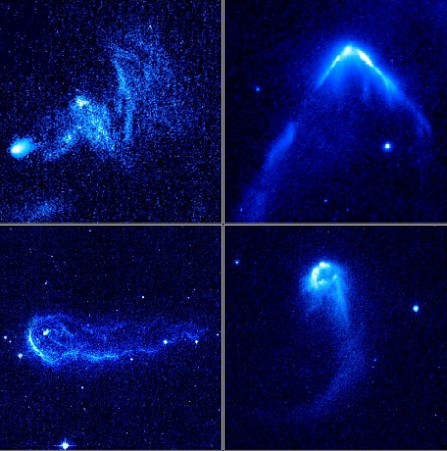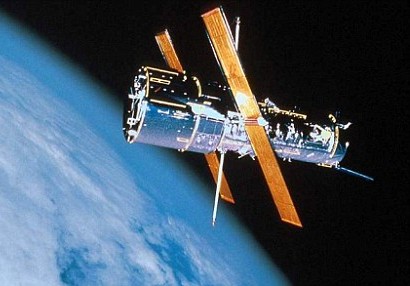The giant missiles roam the universe
The Huble Telescope has captured 14 stars that travel in space at tremendous speeds like giant missiles, creating an arrow-shaped trail of many times the size of the solar system.

The width of light trails can be 170 times the width of the solar system.Photo: NASA.
Arrow-shaped streaks form when strong stellar winds (which include charged particles escaping from the star) collide with dense clumps of gas around. This phenomenon is like launching a speedboat on a water surface.
'We discovered a new star class. They have great brightness and move at extremely high speeds. This discovery surprised us because no one thought of them. When I saw the first picture, I thought it was a rocket flying in space ' , Raghvendra Sahai, an astronomer from NASA said.
The Hubble telescope can help scientists observe the structure and shape of the giant arrow-shaped light trails. Their width can be about 170 times the width of the solar system and travel at speeds of up to 179,000 km / h. 'We think these stars originally resided in large constellations, then they were pushed out of the house,' Raghvendra said.

Hubble Space Telescope.Photo: NASA.
There are two reasons why stars are pushed from their original positions. First, a star in the binary star system exploded and the other star was pushed away by the explosion. Second, the collision between two binary star systems or a binary star system with a third star produces a loud bang. One of the surviving stars absorbs energy from the explosion and escapes the constellation.
Astronomers can only estimate the age, mass and velocity of flying stars. They also rarely detect flying stars because they are extremely rare. 'You cannot predict where they will appear. So all flying stars are discovered by chance. So are the 14 stars that Huble's glasses find, ' astronomer Raghvendra added.
- The 'hungry demons' roam the galaxy
- Top 10 most terrifying intercontinental missiles in the world
- 8 most terrifying ground attack missiles
- How to help people hang out in the universe
- The deadly elements of cruise missiles or the use of shot-down rifles Tomahawk
- Decoding adds a mystery of the universe
- Surprise with the 'ancestor' of all intercontinental ballistic missiles
- Video: American giant missile suddenly appeared in Mysterious Area 51
- Inventing missiles
- The 'orphaned' planets in the universe
- How does the missile reuse affect the aviation industry and the universe?
- Things to know about Buk missiles
 Van Allen's belt and evidence that the Apollo 11 mission to the Moon was myth
Van Allen's belt and evidence that the Apollo 11 mission to the Moon was myth The levels of civilization in the universe (Kardashev scale)
The levels of civilization in the universe (Kardashev scale) Today Mars, the sun and the Earth are aligned
Today Mars, the sun and the Earth are aligned The Amazon owner announced a secret plan to build a space base for thousands of people
The Amazon owner announced a secret plan to build a space base for thousands of people